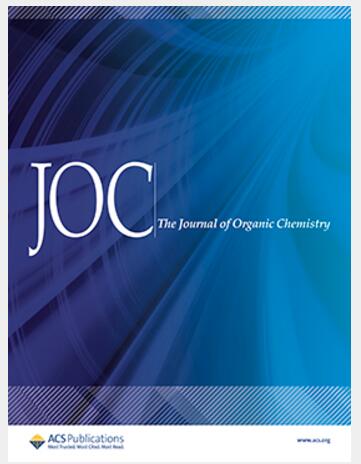后期n -烷基化的氮杂肽缩二聚体。
IF 3.6
2区 化学
Q1 CHEMISTRY, ORGANIC
引用次数: 0
摘要
我们评估了后期氮肽n -烷基化反应中的肽序列相容性,并描述了氮肽和N1, n2 -二烷基化氮肽产物的atropisomer性质。我们的研究结果表明,除了蛋氨酸外,几乎所有受保护的氨基酸侧链都与树脂的后期烷基化条件相容。利用变温核磁共振和动态高效液相色谱,报道了一系列单烷基化氮肽和N1, n2 -二烷基化氮肽的N-N旋转能垒分别为15-16和20-24 kcal/mol。本文章由计算机程序翻译,如有差异,请以英文原文为准。

Azapeptide Atropisomers From Late-Stage N-Alkylations
We evaluate peptide sequence compatibility during late-stage azapeptide N-alkylation reactions and describe the atropisomeric properties of the azapeptoid and N1,N2-dialkylated azapeptide products. Our findings indicate that almost all protected amino acid side chains are compatible with the late-stage alkylation conditions on resin, with the exception of methionine. Using variable temperature NMR and dynamic HPLC, N–N rotational energy barriers of 15–16 and 20–24 kcal/mol are reported for a series of azapeptoids (monoalkylated) and N1,N2-dialkylated azapeptides, respectively.
求助全文
通过发布文献求助,成功后即可免费获取论文全文。
去求助
来源期刊

Journal of Organic Chemistry
化学-有机化学
CiteScore
6.20
自引率
11.10%
发文量
1467
审稿时长
2 months
期刊介绍:
Journal of Organic Chemistry welcomes original contributions of fundamental research in all branches of the theory and practice of organic chemistry. In selecting manuscripts for publication, the editors place emphasis on the quality and novelty of the work, as well as the breadth of interest to the organic chemistry community.
 求助内容:
求助内容: 应助结果提醒方式:
应助结果提醒方式:


